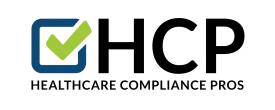The Medicare EHR Incentive Program will provide incentive payments to eligible professionals, eligible hospitals, and CAHs that demonstrate meaningful use of certified EHR technology.
Participation can begin as early as 2011. Eligible professionals can receive up to $44,000 over five years under the Medicare EHR Incentive Program. There's an additional incentive for eligible professionals who provide services in a Health Professional Shortage Area (HSPA).
To get the maximum incentive payment, Medicare eligible professionals must begin participation by 2012.
Incentive payments for eligible hospitals and CAHs may begin as early as 2011 and are based on a number of factors, beginning with a $2 million base payment.
Important! For 2015 and later, Medicare-eligible professionals, eligible hospitals, and CAHs that do not successfully demonstrate meaningful use will have a payment adjustment in their Medicare reimbursement.
Down below is a chart listing the objectives for Stage 1 of Meaningful Use. All of the Core set items should be completed. You may select 5 of the Menu Set items, including the starred (*) items:
|
Core Set (Do All) |
Measure |
|
Record patient
demographics (sex, race, ethnicity, date of birth, preferred language) |
More than 50% of
patients' demographic data recorded as structured data |
|
Record vital
signs and chart changes (height, weight, blood pressure, body-mass index,
growth charts for children) |
More than 50% of
patients 2 years of age or older have height, weight, and blood pressure
recorded as structured data |
|
Maintain an
up-to-date problem list of current and active diagnoses |
More than 80% of
patients have at least one entry recorded as structured data or an indication
that they have no problem |
|
Maintain active
medication list |
More than 80% of
patients have at least one entry recorded as structured data or an indication
that they are on no medications |
|
Maintain active
medication allergy list |
More than 80% of
patients have at least one entry recorded as structured data or an indication
that they have no allergies |
|
Record smoking
status for patients 13 years of age and older |
More than 50% of
patients 13 years of age and older have smoking status recorded as structured
data |
|
Provide patients
with clinical summaries for each office |
Clinical
summaries provided to patients for more than 50% of all office visits within
3 business days |
|
Upon request,
provide patients with an electronic copy of their health information
(including diagnostic test results, problem list, medication lists, and
medication allergy lists) |
More than 50% of
requesting patients receive an electronic copy within 3 business days |
|
Generate and
transmit permissible prescriptions electronically |
More than 40% of
permissible prescriptions are transmitted electronically using certified EHR
technology |
|
Computer provider
order entry |
More than 30% of
patients with at least one medication in their medication list have at least
one medication ordered through CPOE |
|
Implement
drug-drug and drug-allergy interaction checks |
Functionality is
enabled for these checks for the entire reporting period |
|
Implement
capability to electronically exchange key clinical information among
providers and patient-authorized entities |
Perform at least
one test of EHR's capacity. to electronically
exchange information |
|
Implement one
clinical decision support rule and ability to track compliance with the rule |
One clinical
decision support rule implemented |
|
Implement systems
to protect the privacy and security of patient data in the EHR |
Conduct or review
a security risk analysis, implement security updates as necessary, and
correct identified security deficiencies |
|
Report clinical
quality measures to CMS or states |
For 2011, provide
aggregate numerator and denominator through attestation; for 2012,
electronically submit measures |
|
Menu Sets (Select 5 including *) |
Measure |
|
Implement drug
formulary checks |
A drug formulary
check system is implemented and has access to at least one internal or
external drug formulary for the entire reporting period |
|
Incorporate
clinical laboratory test results into EHRs as structured data |
More than 40% of
clinical laboratory test results whose results are in positive/negative or
numerical format are incorporated into EHRs as structured data |
|
Generate lists of
patients by specific conditions to use for quality improvement, reduction of
disparities, research, or outreach |
Generate at least
one listing of patients with a specific condition |
|
Use EHR
technology to identify patient-specific education resources and provide those
to the patient as appropriate |
More than 10% of
patients are provided patient-specific education resources |
|
Perform
medication reconciliation between care settings |
Medication
reconciliation is performed for more than 50% of patient transitions of care |
|
Provide a summary
of care records for patients referred or transitioned to another provider or
setting |
Summary of care
record is provided for more than 50% of patient transitions or referrals |
|
*Submit electronic
immunization data to immunization registries or immunization information
systems |
Perform at least
one test of data submission and follow-up (where registries can accept
electronic submissions) |
|
*Submit electronic
syndromic surveillance data to public health agencies |
Perform at least
one test of data submission and follow-up submission (where public health
agencies can accept electronic submission) |
|
Send reminders to
patients (per patient preference) for preventive and follow-up care |
More than 20% of
patients 65 years of age or older or 5 years of age or younger are sent
appropriate reminders |
|
Provide patients
with timely electronic access to their health information (including
laboratory results, problem lists, medication lists, medication allergies) |
More than 10% of
patients are provided electronic access to the information within 4 days of
its being updated in the EHR |
CMS Has Paid $653 Million in EHR Incentives
The federal government has paid out more than $653 million for electronic health-record system incentive payments to programs under Medicare and Medicaid, according to the latest data from CMS.
The programs, created under the American Recovery and Reinvestment Act of 2009, have registered 90,650 organizations or individual providers through Aug. 31, the CMS reports.
So far, Medicaid program payments for hospitals, physicians, and other eligible professionals that have adopted, implemented, or upgraded to a certified EHR system have totaled $389 million. Only $264 million has been paid under the Medicare program, which has a higher eligibility threshold, requiring providers to demonstrate that they are meaningfully using their certified EHR system.
Through Aug. 31, 2,054 hospitals have registered with the CMS to receive Medicare incentive payments. Hospitals that are registered as dual-eligibles need to attest to having met meaningful-use targets under the Medicare portion of the program. But only 114 of the registered hospitals (less than 6%) have attested to being meaningful users. They have split about $226 million into Medicare EHR incentive payments.
Similarly, for the same period, 71,378 physicians and other "eligible professionals" have registered with the CMS under the Medicare EHR program, but only 2,129 (or about 3%) have shared in $38.3 million in Medicare EHR payments. Unlike hospitals, professionals can't participate in both the Medicare and Medicaid incentive programs. They must choose one.

